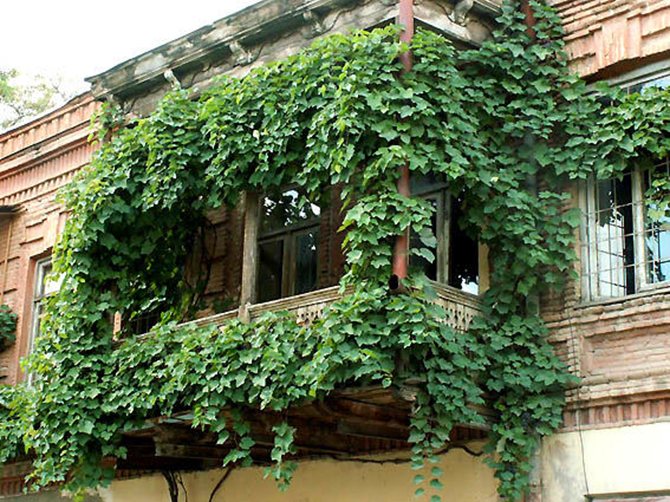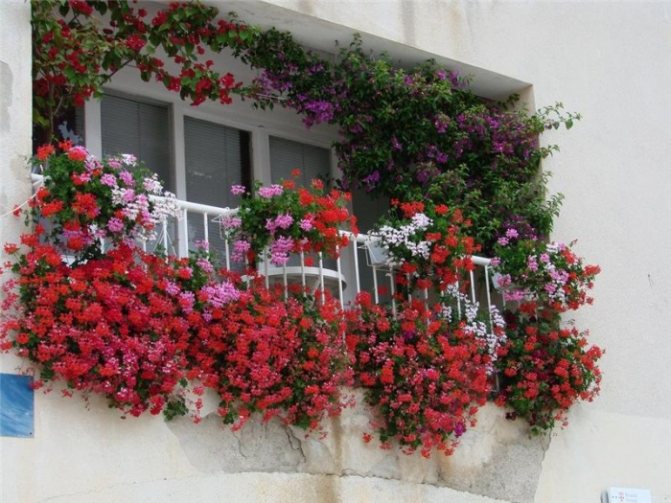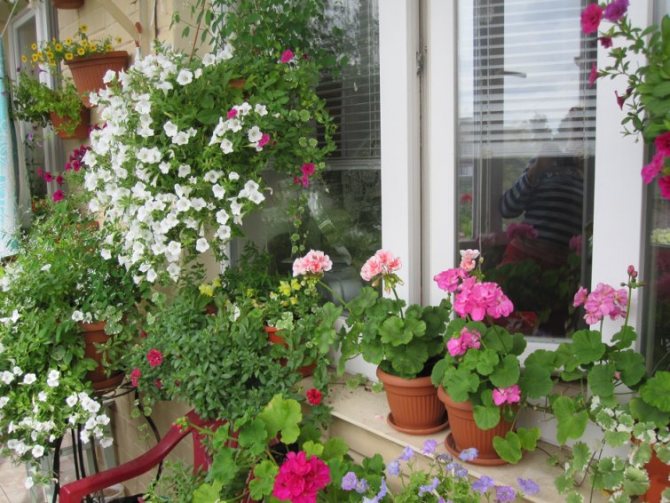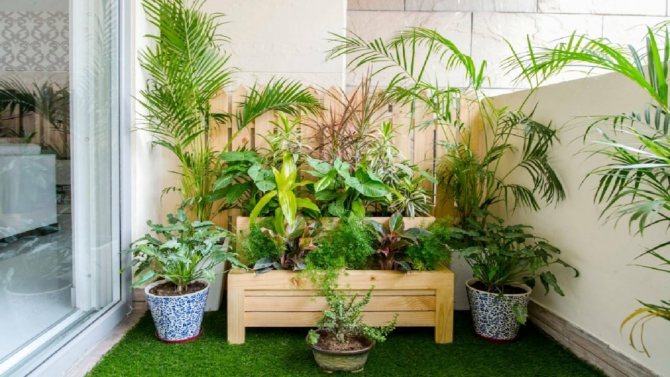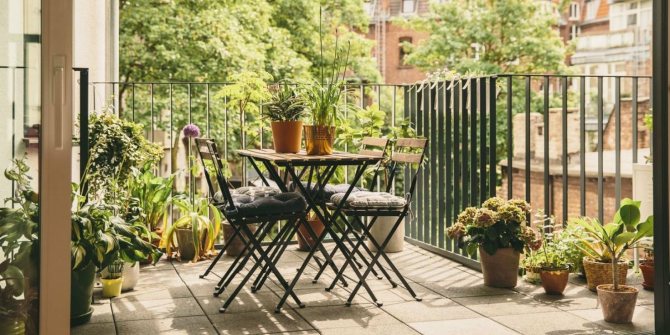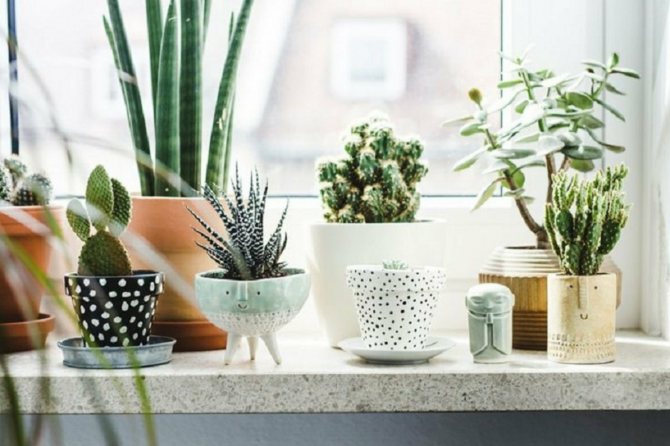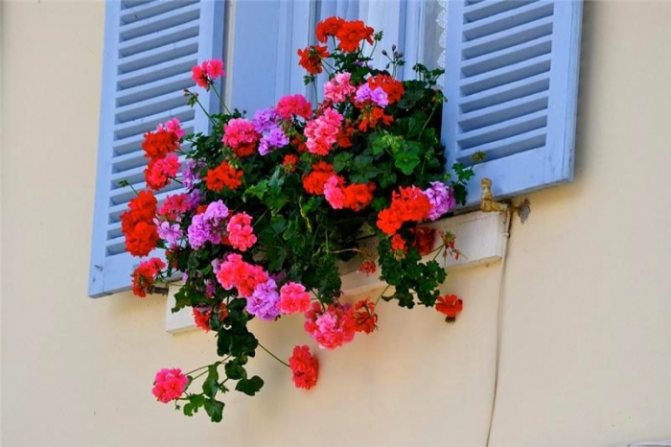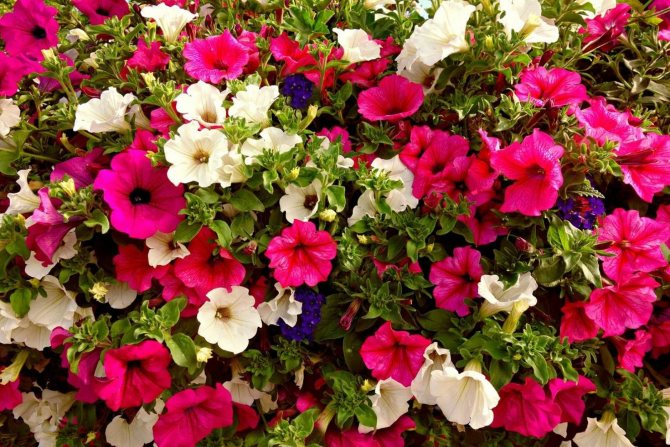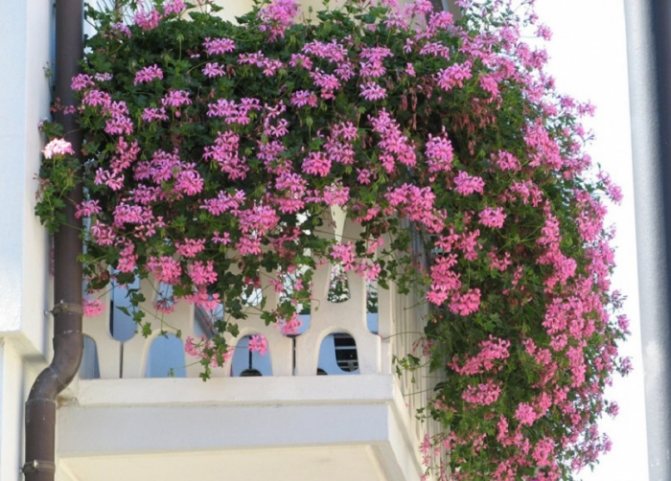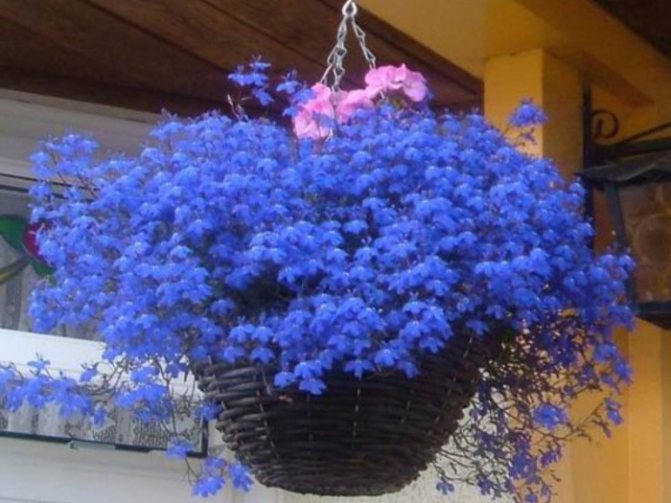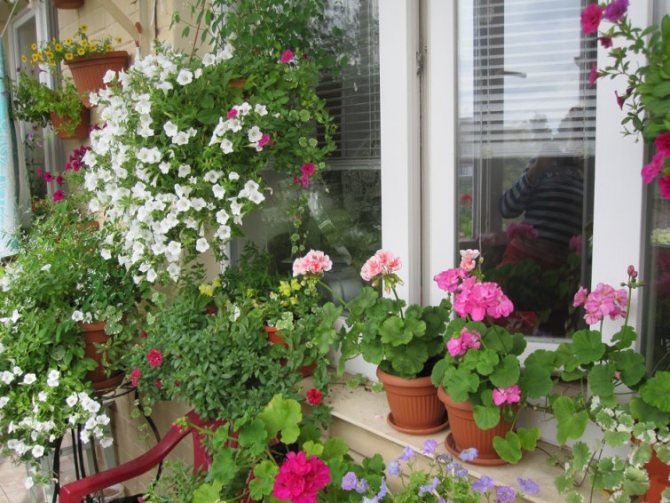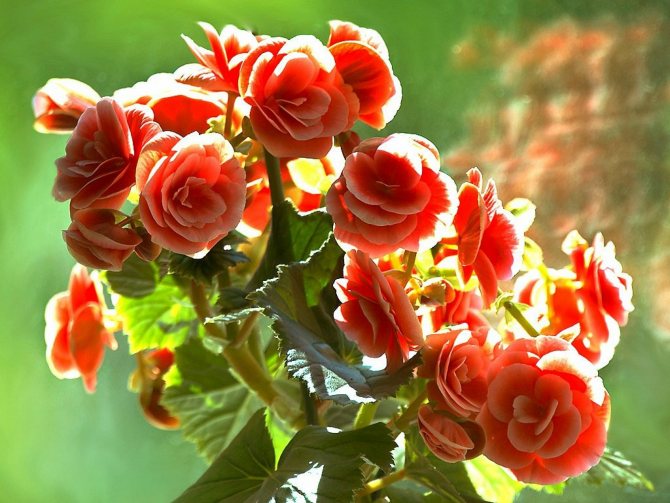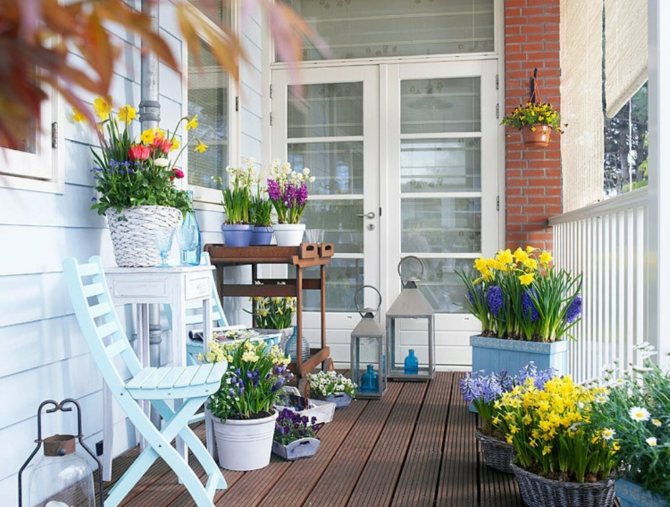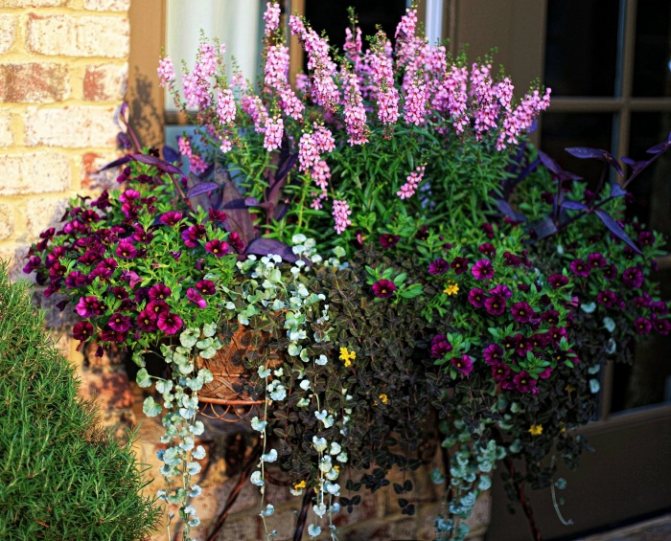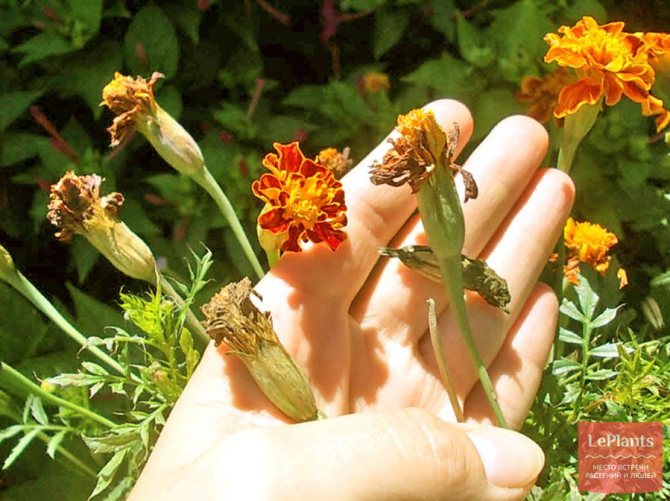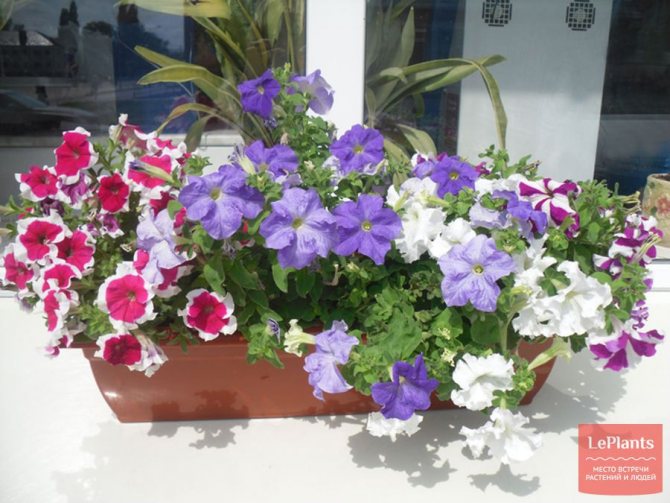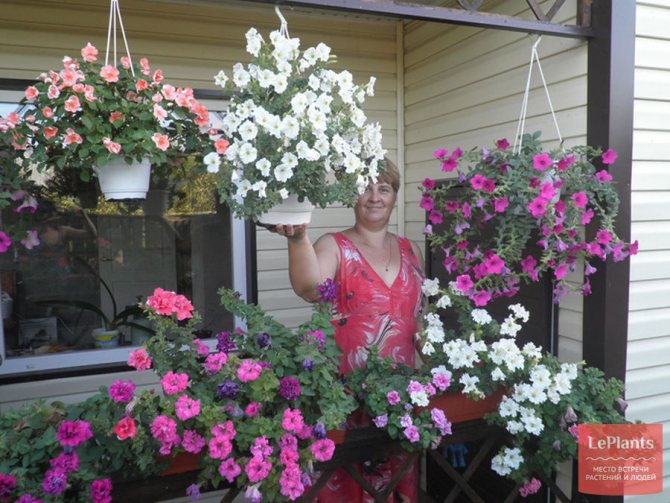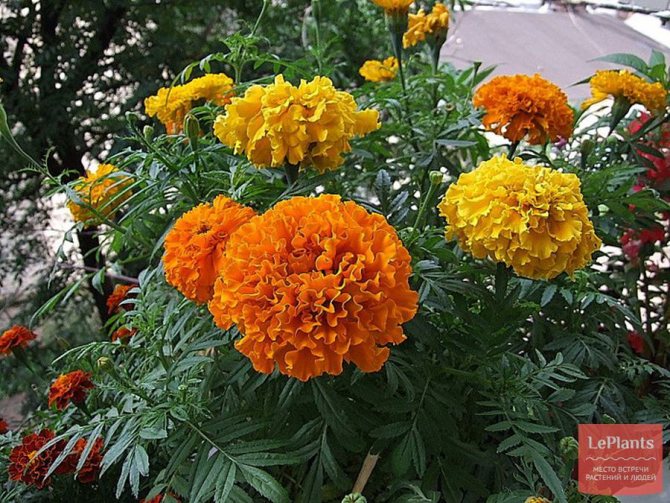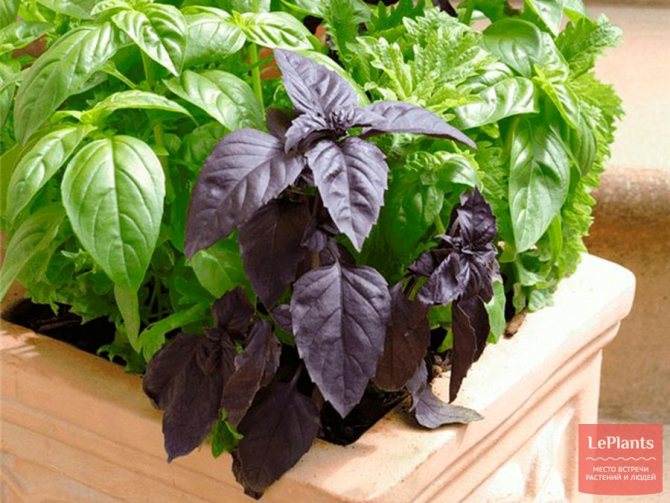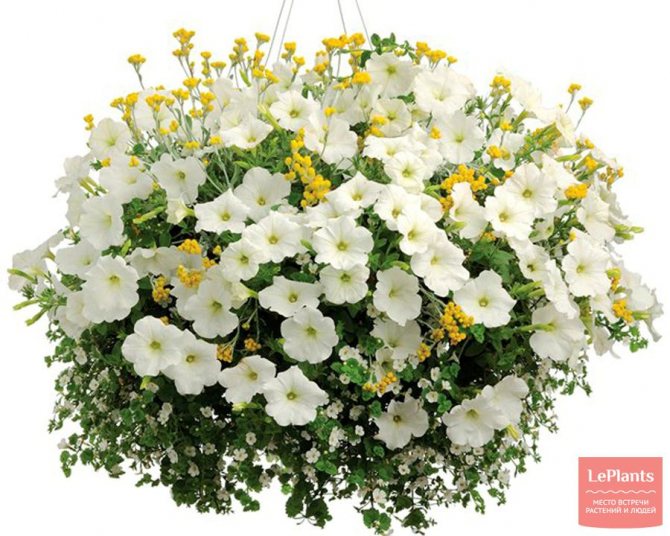Almost every one of us has a balcony at home. Some put all unnecessary trash on it, while others grow flowers on the balcony, creating a real garden of indoor plants that bloom in winter and summer.
If you are from the category of "others", then you will certainly be interested in the prospect of creating not only a winter garden, but also a summer blooming oasis. With a little effort, you can create a cozy resting place from a simple balcony, which will delight you with its view all year round.
We plant greenery on an open balcony
To begin with, consider an unglazed balcony, as it is most often found. Thanks to plants, it can be made not only beautiful and useful, but also create shade on a hot summer day. For this purpose, you need to use vertical gardening.
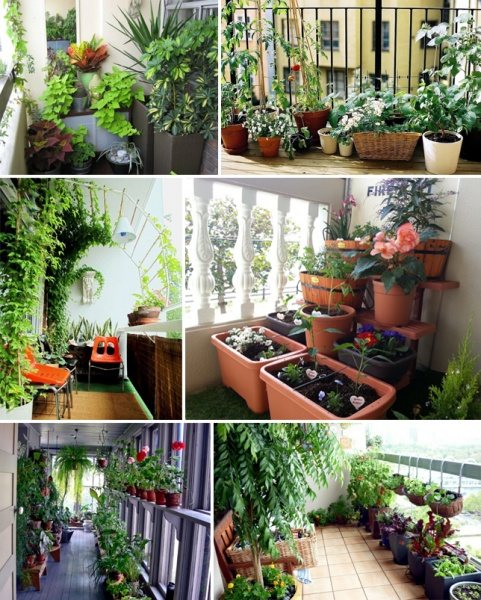
As for the choice, you need to pay attention to annual plants that are unpretentious to weather conditions. After all, the unglazed balcony is cold. We have selected several options, thanks to which you can make vertical landscaping for an unglazed balcony. Let's take a look at them:
- Multi-flowered beans. Thanks to its lashes, the plant will create a dense "fabric" on the balcony, which is decorated with white or red flowers. It is noteworthy that this plant can grow up to 3 m and will bloom actively from the beginning of June to the end of September. It is recommended to grow it in boxes located on the floor. Then the beans will be actively stretched in height, receiving a sufficient amount of solar energy.
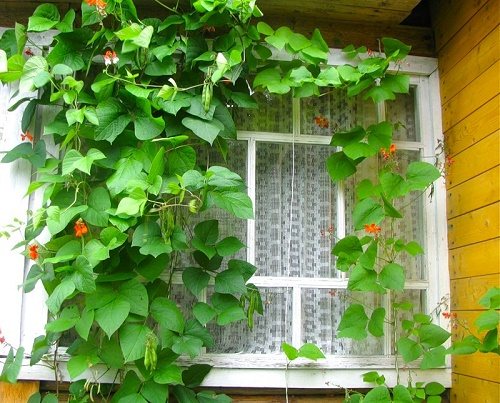

Advice! Ipomoea has the same effect. However, it grows up to 3-4 m and the flowering period begins in June, and ends right up to the very frost. - Sweet pea. Quite a small balcony plant when compared to the previous ones. Its height can vary from 1 m to 2 m. It begins to bloom in June and ends in October. Since this plant loves a sufficient amount of light and heat, it is advisable to grow it if your balcony is on the south side with enough light. It is better to grow in boxes and put on a windowsill so that they have enough warmth and light.
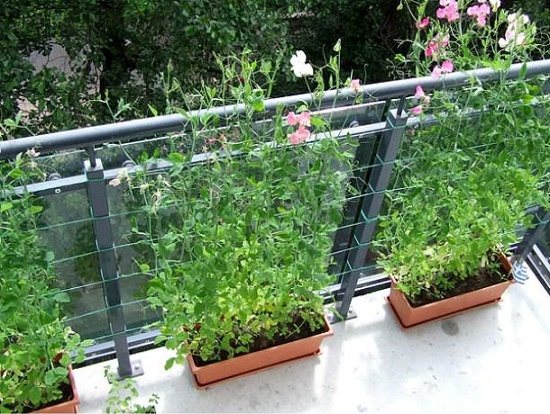

- Ivy, clematis, grapes or indoor rose are ideal for vertical landscaping. Plus, hops and turkish beans are perfect. Even plants such as actinidia or clematis will also be appropriate.
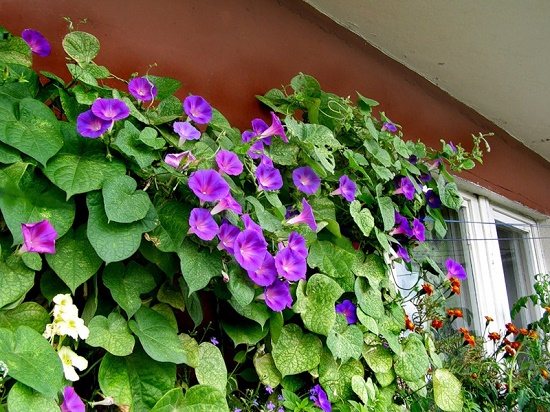

Shadow side
If the balcony is in the shade for most of the day, Tradescantia, Primula, Aspidistra, Cissus, Chlorophytum, various bulbous, Sansevieria, Ivy will take root on it. Of the large-sized plants, it is worth planting Monstera, Clevia, Ficus, Hydrangea, ferns, Myrtle on a shaded loggia.
From flowering plants, tuberous Begonia is suitable for a shady balcony.
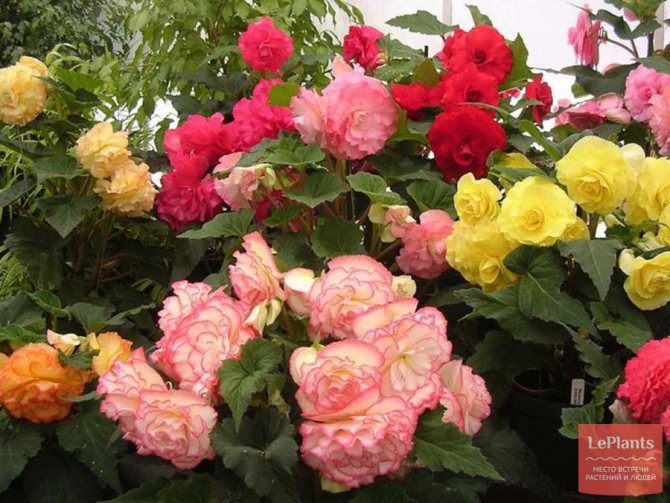

ON THE PICTURE: Tuberous Begonia is a great choice for a shady balcony.
This type of Begonia is decorated with asymmetrical jagged foliage, flowers of all kinds of shades of white, yellow, orange, red, pink. They are large, single or small, but collected in clusters; simple, semi-double and terry.
Begonia blooms throughout the summer, continuing until October. But it is necessary to remove the plant from the non-insulated balcony before the onset of the first frost.Begonia loves fertile, slightly acidic, breathable soil, which must be constantly moist.
Another flowering plant that is ideal for the conditions of a shady balcony is Fuchsia.
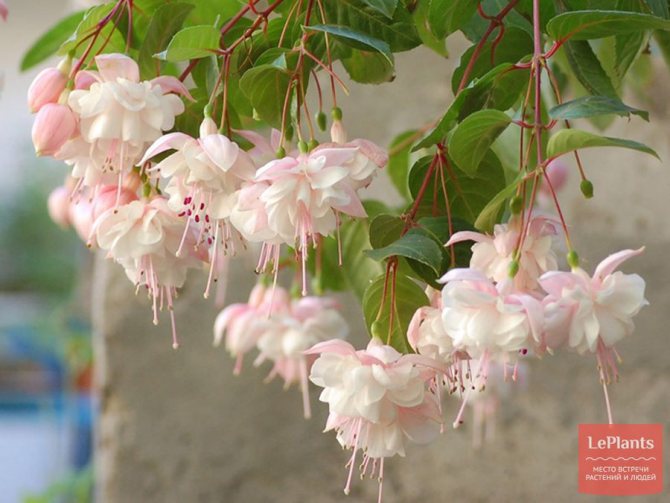

ON THE PICTURE: Fuchsia perfectly tolerates shade.
It is impossible to take your eyes off Fuchsia with blossoming buds. The unusual shape and color of the flowers, the lush bloom are literally mesmerizing. Especially decorative ampelous species grown in hanging pots.
To get an elegant flower cascade, take three to five cuttings of Fuchsia, depending on the size of the container. They are planted together, closer to the edge of the container, at some angle.
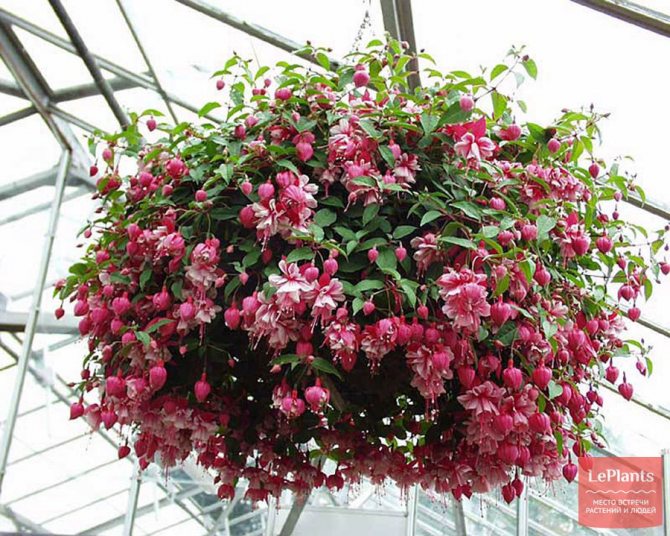

ON THE PICTURE: The flower cascade of ampelous Fuchsia will decorate any balcony.
Fuchsia grows rapidly and blooms early. Like Begonia, she is very demanding for watering and cannot stand the drying out of an earthen coma.
The ubiquitous annuals, Petunia, Nasturtium and Marigolds, can also be planted on a shady loggia. If a pleasant aroma is important, they will delight Alyssum, Carnation, Levkoy and Verbena. Forget-me-nots and Calendula grow well in the shade.
Complementing the overall composition
But, do not limit yourself exclusively to climbing plants. After all, the upper part of the structure should also be formalized. The following varieties of plants and flowers will help you with this:
- Ampel plants. This includes: petunia for the balcony, pelargonium, ivy geranium, creeping fuchsia, bush nasturtium. Hanging down, the petals will hide the box.
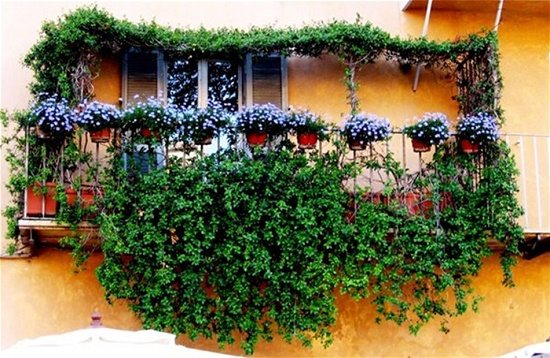

- Stunted. Dahlias, violets, mignonette, Shabo carnation and undersized aster are suitable for the balcony.
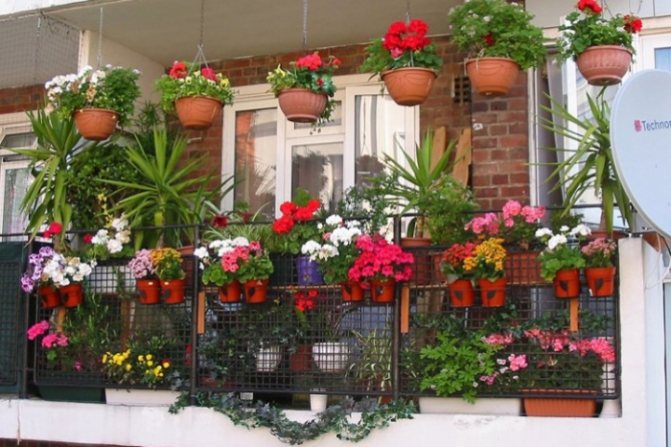

- Medium in height: alyssum, common carnation, daisy, marigolds.
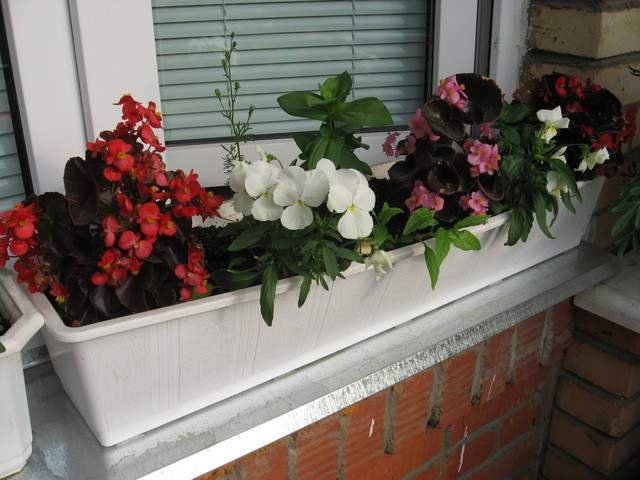

- Tall: Snapdragon, Coreopis, or scented tobacco.
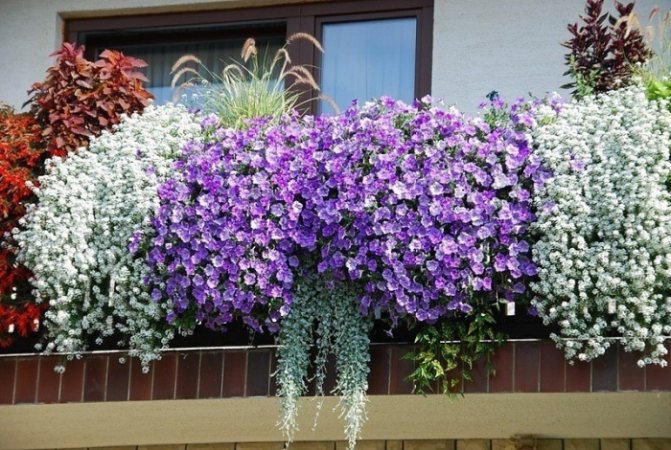

As for the arrangement of flowers, they can be planted in different boxes and placed at a height. A combination of some plants in one box is acceptable, for example, the first row is ampelous plants, the second is medium in height, and the back is climbing or tall species.
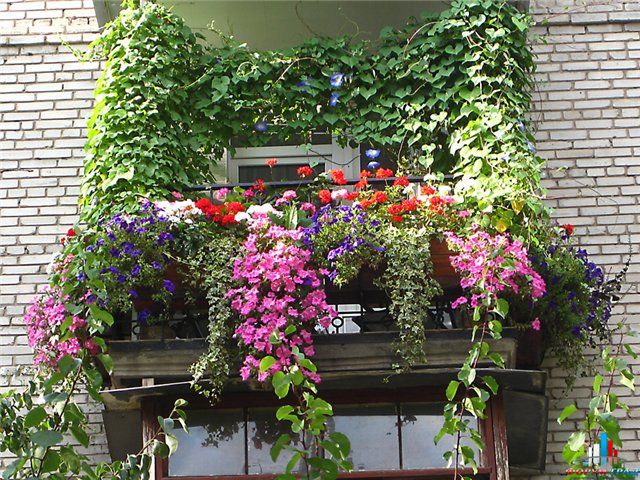

Roses
If you buy roses in a store, be prepared for the fact that your gorgeous flowers will very soon lose their original beauty due to changes in room conditions and changes in humidity. For example, in a store you buy a small bush of roses with buds, but when you bring it into the house, the buds do not open.
It should be understood that this is a temporary unpleasant feature, but in the near future it is better to transplant your rose immediately.
We select the right soil
Homemade roses are often transplanted at the end of winter - early spring, but it is better not to buy the soil itself, but try to cook it yourself. Ideally, ready-made universal soil is mixed in combination with sod forest soil, garden soil, humus, sand and vermiculite in combinations: 4: 2: 2: 2: 1: 1. It would be nice to add "Biocompost".
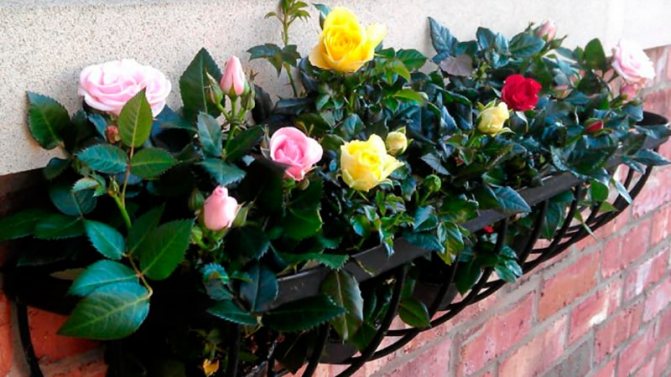

Growing roses on the balcony
This composition must be spilled with a hot solution of potassium permanganate 60 ° C. After the soil has cooled and dried, you can transplant. For a couple of days, it is better to spray the rose with Epin for quick adaptation.
Capacity
The container should be taken 2 cm larger than the previous one in diameter, on the bottom of which expanded clay should be laid. A plant transplanted into a new soil should be well watered and placed away from a window for a couple of days to avoid drafts. Before returning the flower to its original place, the plant should be sprayed again with "Epin".
Flowering care
As for pruning, after the flowering of the rose, all shoots should be cut off, leaving hemp with 3-4 buds. If you take proper care of the plant, it will quickly overgrow with new green leaves and the rose will bloom again.
Important! If the plant is not cut off after the flowers have faded, then instead of buds there will be only one green bush.
After cutting, the cuttings can be placed in a container of water for rooting in a tied bag.After 2-3 weeks, the cuttings can be planted.
When buying a rose in a store in a plastic pot during the flowering process, it is better not to transplant it, but to pick up, for example, an original planter for it.
As the rose grows in your home, you should not be surprised if the bush becomes slightly larger. This is due to the fact that in stores plants are sprayed with drugs that slow down the growth of the bush. If you do not want the bush to grow, you can use the Athlete solution to slow down the growth of the shoots.
As for watering, remember that loose soil and drainage in the container will help to avoid stagnant moisture. However, the rose needs abundant watering. But do not overdry the soil, as the leaves will begin to fall off.
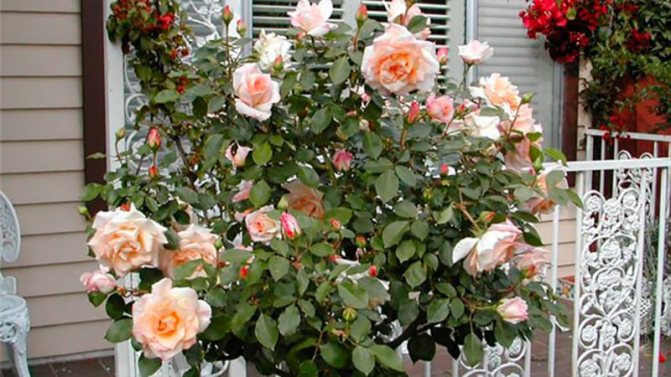

We grow roses on the balcony on our own
When watering a rose, you must wait until all the water drains into the sump, then the sump must be emptied. It is important between waterings that the top layer of the earth dries out a little.
During the cold season and for a month after transplanting the plant, the rose should not be fertilized. The rest of the time, it is better to add fertilizers every 2 weeks.
Important! After pruning, as the greens grow, the rose needs fertilizing with fertilizers containing nitrogen in them, and before flowering - fertilizers for flowering.
In a warm period of time (May-October), you can even put them on an open balcony, but you should not leave them under the scorching sun all day, it is better to cover the flowers, especially young ones, to avoid burns.
After you prune in the fall, the rose needs to be allowed to rest. In this case, it is necessary to set it aside from the batteries, closer to the window and reduce watering.
Then you can put the rose in a warmer place and proceed to the usual watering regime. From February, you can safely start feeding. In the spring, your rose will grow beautifully and delight you with its magnificent color.
Moreover, growing roses on the balcony can also trigger spider mites. If your room is excessively dry, then you will hardly be able to avoid its appearance. Therefore, watch the rose and react as necessary in the event of parasites.
When a tick appears, the rose can be treated with soap foam, leaving it for half an hour, then everything must be well washed off in the shower. This procedure should be repeated three times every other day.
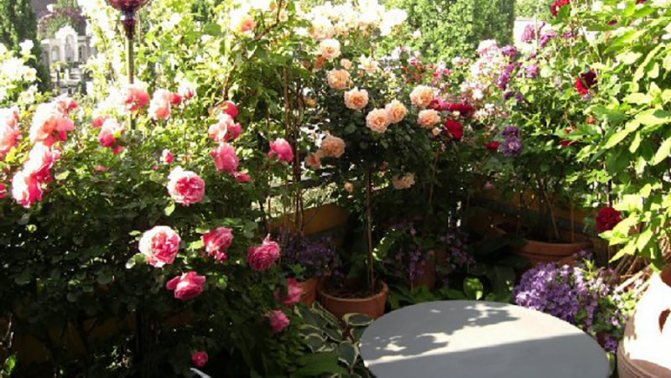

Growing roses on the balcony
If the soap does not overcome the pest, you can use Fitoverm. Experienced gardeners also recommend using a cold shower every day for a week.
If the tick appeared a little earlier than you managed to notice it, then after treatment with a special agent, the rose may lose its leaves. You should be patient here.
Rose cuttings
Choosing flowers for the loggia
Flowers on the loggia will make it attractive and lively. The difference between a loggia and a balcony is that it is part of an adjoining room, therefore it is completely glazed. The room is insulated and decorated according to the plans of the tenant. That is why you have more options and choices for landscaping a loggia. After all, flowers can grow without problems even in winter. Therefore, for a loggia, you can use almost any plant, even a heat-loving one. What could it be:
- cacti;
- everyone's favorite orchids;
- exotic palms;
- begonias;
- climbing plants.
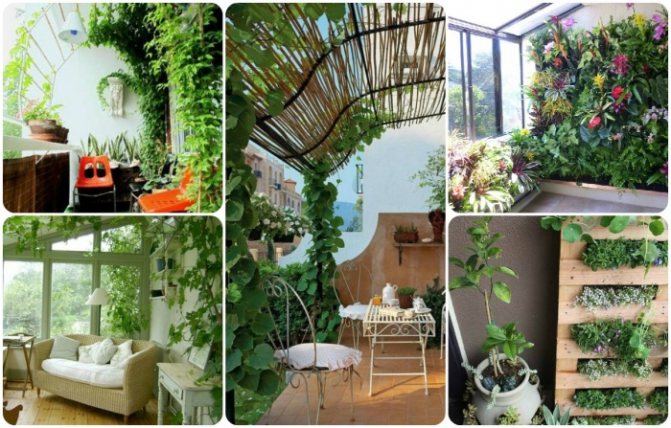

In fact, there are practically no restrictions. The only point to consider is the position of your loggia. For example, for the north side, it is better to choose unpretentious plants. As for the southern one, thermophilic flowers and flowerpots are needed here.
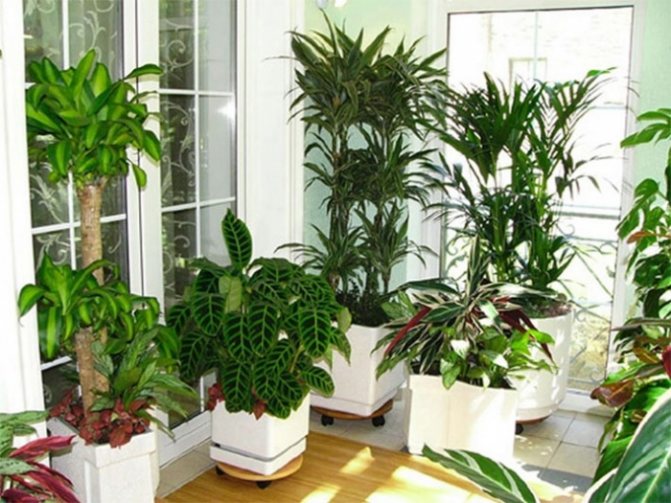

Winter Garden
On the glassed-in balcony or loggia, you can organize a real winter garden. This is the best option for upper floors.
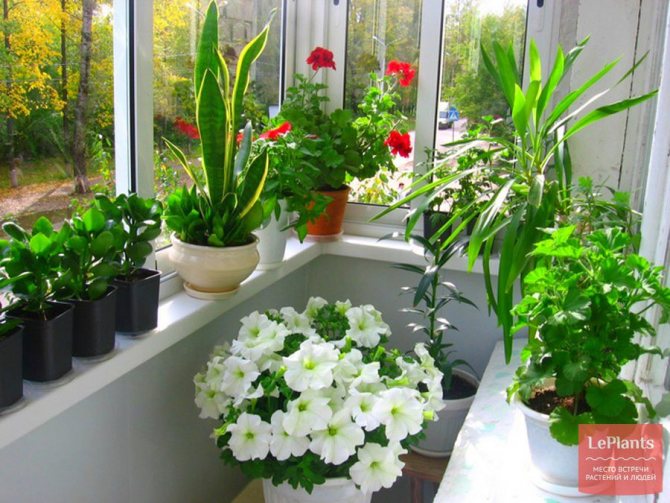

ON THE PICTURE: The choice of plants for a glazed balcony is much wider than for an open one.
If there are additional light sources on the glazed balcony or loggia, the choice of plants for them is practically unlimited. If you insulate the walls and floor, install double-glazed windows, install electricity, hang lamps, you can grow whatever your heart desires.
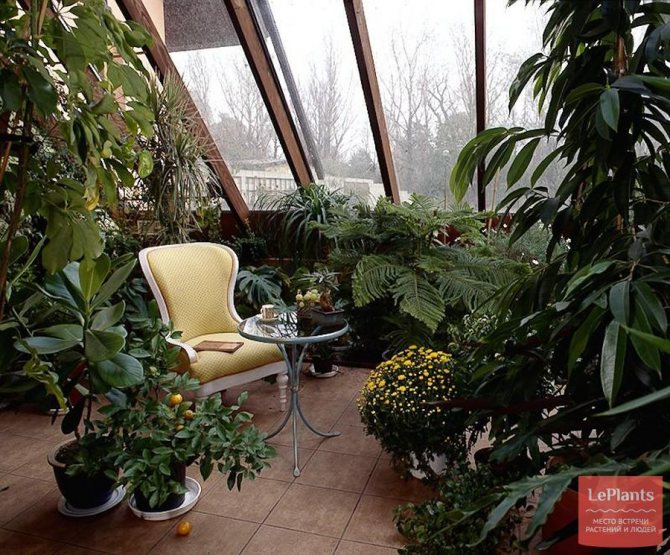

ON THE PICTURE: A glazed balcony or loggia turned into a winter garden is a great place to relax.
We plant, taking into account the flowering period
Besides the fact that you need to choose a composition and combine several varieties of plants, you must not forget about the season of their flowering. After all, some bloom in autumn, others in spring, etc. If you take this into account, then your loggia will be in blooming plants all year round. So, we will divide all suitable types of plants for a loggia into 3 groups:
- That bloom in the spring. What can you choose from? Pansies, viols, tulips, forget-me-nots, daffodils, daisies, and hyacinths will do. Their flowering period is the first half of May and the first days of June.
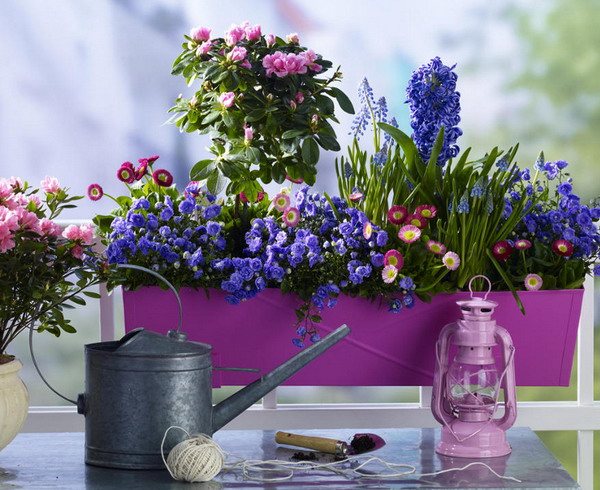

- Blooming in the summer. Here you can note petunias, snapdragons, levkoy, marigolds and even sweet peas. They will bloom immediately after the previous version, namely in the second half of June until the beginning of September.
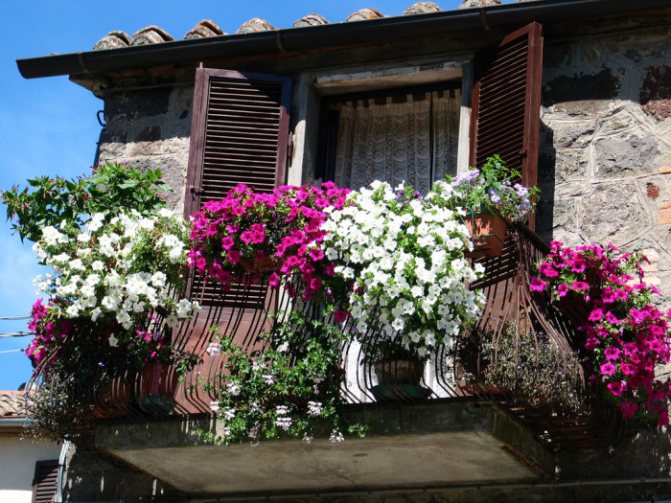

- Blooming in the fall. Asters, gladioli, chrysanthemums, sedums, and dwarf zinnias complete our "hit parade".
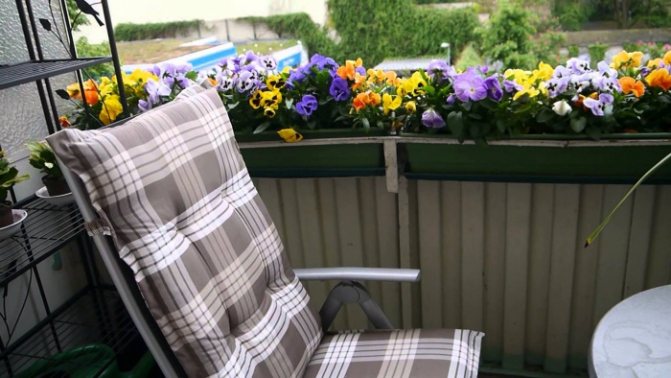

If everything is done correctly, then each type of flowers will replace the other in time. It turns out that from the beginning of the spring period to late autumn (or even to the middle of winter), your loggia will be like a blooming garden that gives joy not only with beauty, but also with a pleasant smell. But what the flowers look like on the finished loggia, you can see in this photo.
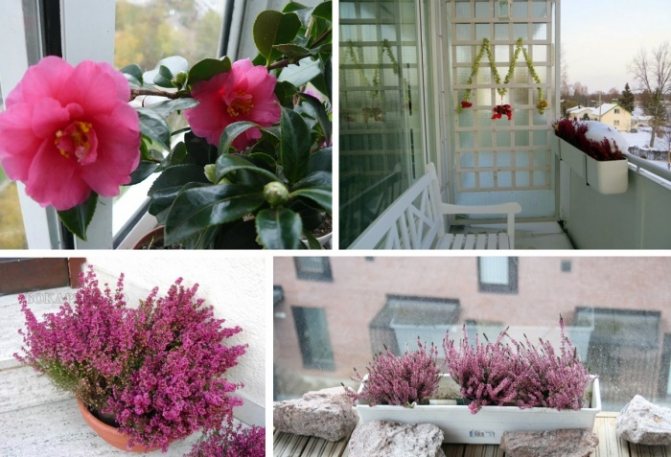

We would like to note that for the loggia the list of plants is not limited only to what we have named. If the room is well glazed, it is warm and there is enough light, then your possibilities are not limited. You can even make a winter garden, because there are all the possibilities for this. The advantage of a loggia over a balcony is that it is completely hidden from the influence of the external environment. Therefore, this is an ideal option for your plants, because neither a strong wind, nor a scorching heat, nor severe frosts will be terrible.
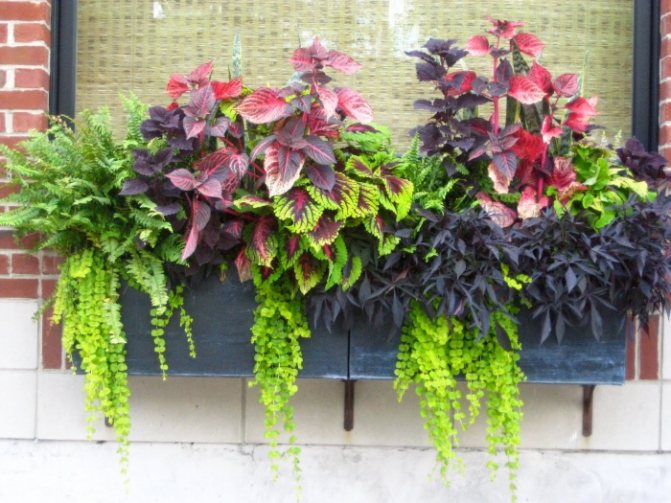

Content
- 1. Sunny side
- 2. Shadow side
- 3. Balcony or loggia above the fifth floor
- 4. Winter garden
- 5. A few tips in the end
Where to start turning a loggia or balcony into a piece of paradise with flowering plants? For the successful cultivation of any flower crop, it is important to organize the conditions suitable for it.
It is not necessary to determine the orientation of the future oasis to the cardinal points. The idea of whether the balcony is on the sunny or shady side is enough. This is the main criterion for choosing flora for him.
Where to place flowers and flowerpots
There are a lot of options. We will talk about both the balcony and the closed loggia. Option number 1 - window sill or railings. Ampelous plants can be installed there. The second option is gender. This is the place for climbing and tall plants. The third option is walls. You can hang planters and flower pots by making a hanging planter, or place them on shelves.
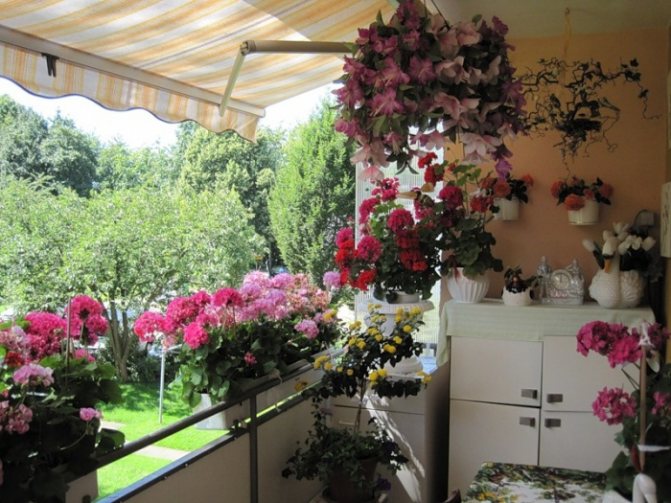

The fourth option is the outer part of the parapet (suitable for balconies). It is recommended to install undersized plants here.
Some additional tips
- First of all, check the reliability of the support of the supports and flower pots, especially when it comes to climbing plants.
- If you are using pots with drainage holes, make sure to make trays where excess water will drain when watering.
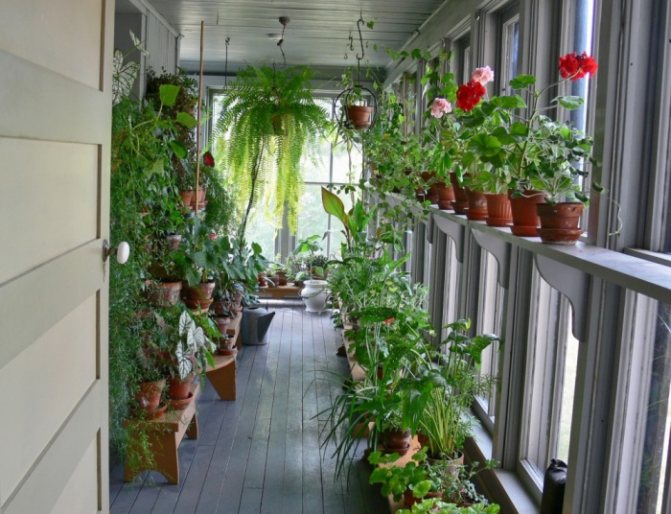

- For a balcony on the sunny side, ideally, use containers of light shades, since, unlike black ones, they will not get very hot and overheat the root system of the plant on the loggia. As for the shady side, the black pots are just right here.
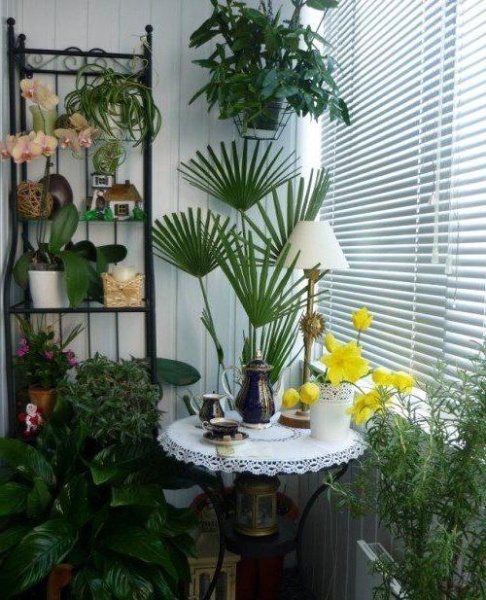

- You should not choose whatever, because you need to harmoniously combine color shades and shapes. There should be variety, but moderate.
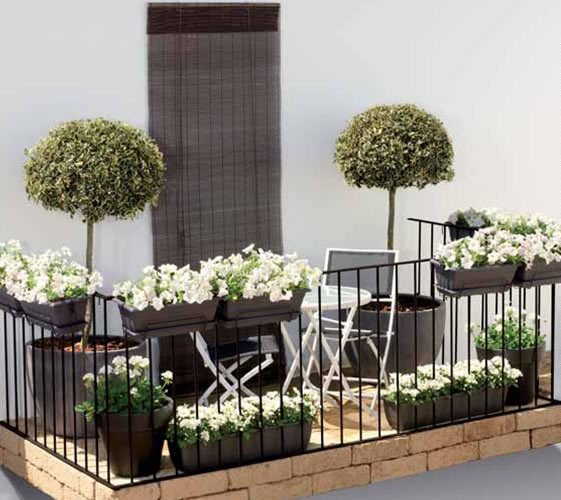

- If we are talking about a glazed loggia, then it is important to ventilate the room by filling it with fresh air. Thus, you will ensure the maximum comfort of your plants.
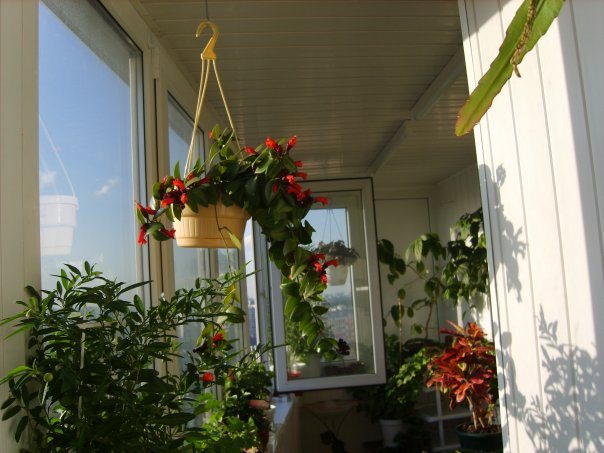

- As for watering, it is better to do this either in the morning or in the evening. Do not forget to periodically feed them with fertilizers.


Landing
Balcony flowers are planted by seeds in April.
Tip: Plant the flower garden on the balcony with seedlings, so that it smells fragrant in all its glory as quickly as possible.
The soil
To grow flowers on the balcony, compost is used. The earth must be moisture-permeable so that it does not compress, but allows moisture to get to the roots. For this purpose, a small amount of sand and refined peat (one fifth of the entire mixture) are added to the earthen mixture. You can enrich the ground with crushed eggshells. Potting soil for home flowers is not suitable for balconies.
Landing
There are simple rules for how to plant flowers on the balcony. Landing boxes should have holes for excess fluid to drain. Drainage is laid at the bottom: pebbles, expanded clay, broken brick. Pour the soil mixture, leaving a distance of three centimeters to the top of the pot. This is necessary so that during watering, water does not overflow over the top of the container.
Plants are planted by submerging in the ground to the same level as they were in the seedling container. The surface of the ground between the seedlings can be filled with expanded clay, pebbles. Flower pots should be proportionate to the size of the adult plants. Do not plant small flowers in large boxes for them.
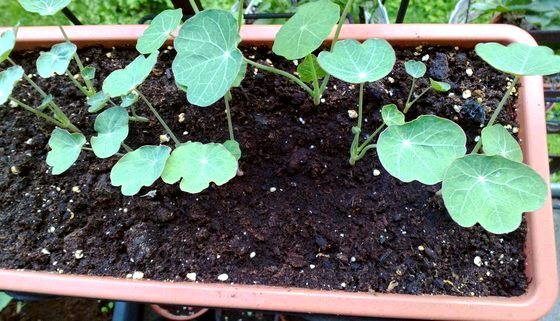

Seedlings of nasturtium in a balcony box
Land selection
For balcony flowers, a universal soil is suitable, which is better to fertilize with humus. It is also good to add peat no more than 10% of the total mass of the soil to the ground. To make the earth more moisture-permeable, sand is added to it. The main thing, no matter what the seedlings are, you cannot use mixtures for indoor flowers, in which there are few substances necessary for garden plants.
Every year, new soil must be collected in boxes for flowers, since it is depleted during the season.
Important: since the soil in the boxes is quickly depleted due to its limited amount, the soil must be constantly enriched. It is better to feed the plants with complex fertilizers every 10 days.
The distance between plants should be different for each species. Beans, sweet peas should be planted at a distance of 10 cm, daisies, mignonette, begonias, marigolds - 15 cm, fuchsias, petunias, asters - 20 cm.
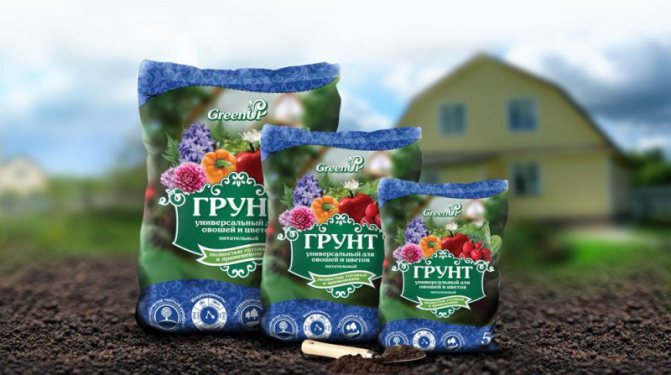

For balcony flowers, a universal soil is suitable, which is better to fertilize with humus.
General characteristics of vines
From all the variety of vines - one / perennial, you can choose the one that suits your psychological type, character or creative focus. If you are overwhelmed with a thirst for change, the curly annual flowers, new every year, will appeal to you.
If stability is important to you, you adhere to conservative views and the house in your understanding is an indestructible fortress, perennials will be just right. The consistency of colors will be associated with peace, the usual course of affairs and the unchanging order.
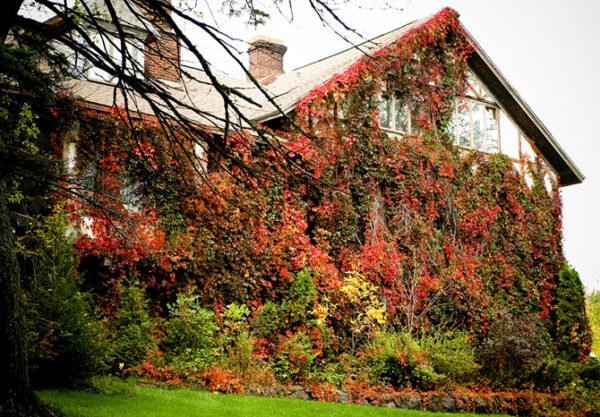

Where is the window, where is the balcony - no one can make out
When to plant a flower garden
When it is decided which plants to plant, you need to decide when to plant them, so that in the summer the balcony is full of flowers. If you want flowering to begin as early as possible, then it is better to plant flower seedlings in early May.
Seedlings can be bought ready-made or grown independently from seeds. If you plan to grow it yourself, then you can plant seeds for seedlings at the end of March - April. If the flowering time is unimportant, then the seeds can be planted immediately in boxes when it gets warmer outside - in mid-late May.
Interesting solutions
You can combine useful with pleasant and, in addition to flowers, plant spicy plants on the balcony. Bright inflorescences are beautifully set off by curly parsley leaves, dill, thyme, lettuce. Different varieties of onions look quite decorative, especially chives, from which you can make a border.
For the summer, you can take out those indoor flowers on the balcony that are resistant to temperature changes. Then the balcony will look even more decorative. Monstera, cyclamens, azaleas, oleander, hydrangeas complement the balcony flower garden very well.
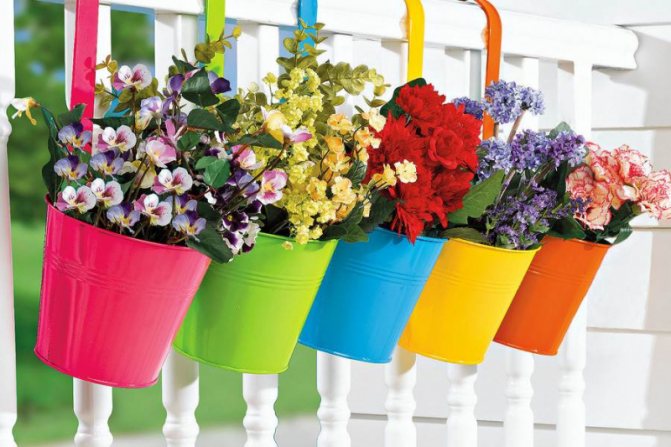

There are many interesting solutions for gardening balconies with flowers.
Summarizing
Deciding to decorate the balcony with climbing plants, you can only abandon stereotypes. But how wonderful the world will look from the window of an apartment on the nth floor - green, rustling, alive. The main secret is to start small, and with a positive experience, you will want to experiment.
The video in this article will help reveal some of the secrets of growing plants for vertical gardening.
In the comments it would be interesting to see your experience of working with climbing plants and growing them on balconies.
When arranging and decorating a balcony, a variety of plants are often used. They perform a decorative function, and also protect the adjacent room from bright sunlight. Climbing crops are recommended to grow a gorgeous green wall.
It is important to choose the right balcony plants. This takes into account the size of the room, climatic conditions and personal preferences of households.
You can choose from annuals or perennials. Before purchasing options, you should study the properties of certain plants, as well as study the information on the rules for caring for a balcony garden.
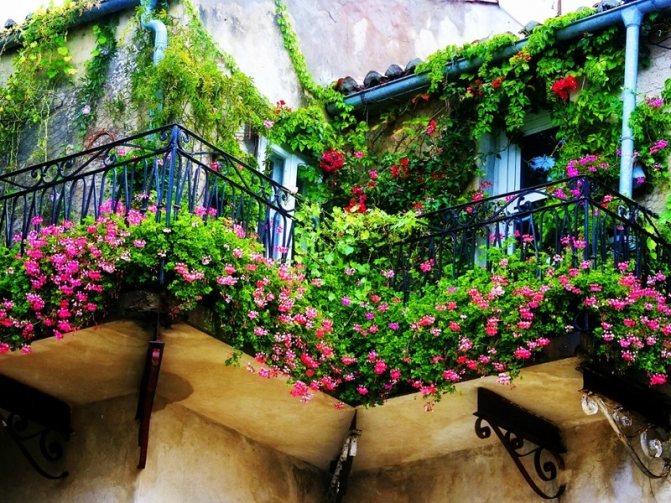

Climbing plants greatly ennoble any balcony.
Climbing plant benefits
Fast growing and climbing plants have the following advantages:
- The walls are quickly entwined.
- With their help, you can mask walls with defects.
- Such plants allow you to create an accent in the interior.
After planting, the plants require some care. We must not forget about watering and timely weed removal. In preparation for winter, each shoot is strengthened with an earthen tubercle and sawdust. Such a coating will protect the root system in cold weather.
What to look for
It is important to monitor the plants so that the balcony always has a well-groomed appearance. It is better to remove faded inflorescences immediately.
If the edges of the leaves begin to dry, more watering is required. However, yellowing of the leaves can indicate that the earth is dry and that the plants are flooded. By the way, waterlogging can provoke illness. Water the plants, therefore, should be moderate, once every few days, as the soil dries up.
If you follow all these recommendations, the balcony will delight you with exuberant and long flowering and look like a real garden.
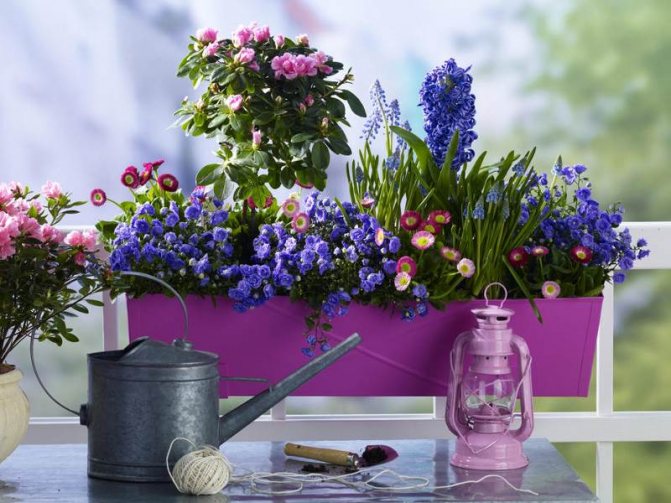

It is important to monitor the plants so that the balcony always has a well-groomed appearance, it is better to remove faded inflorescences immediately
Hanging basket
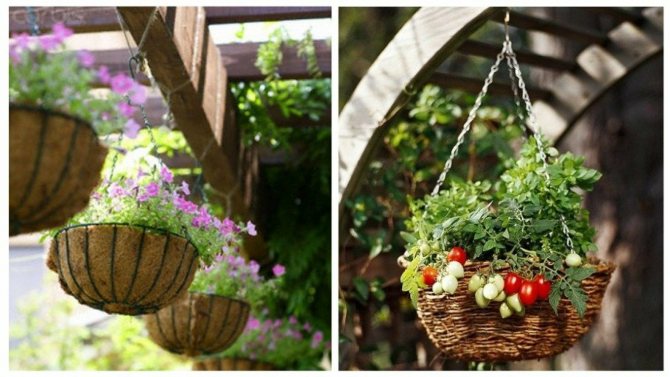

An effective option, but you have to tinker. The air above is warmer and drier, and watering plants at this height is not an easy task. Therefore, if possible, hang the planter at eye level. Most importantly, do not forget to check the fasteners: the hook or bracket must support the weight of the container with the soil after watering.
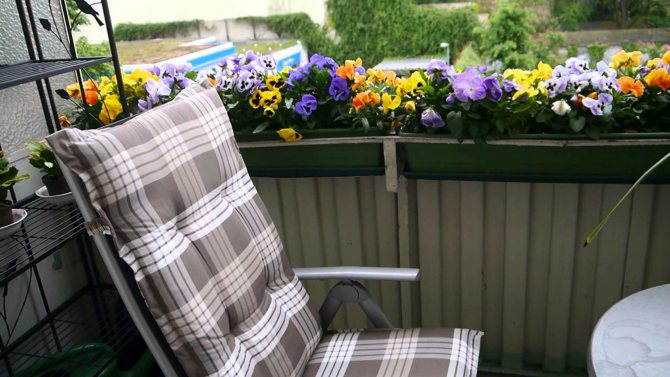

We hope that after this article you are convinced that luxurious balconies, buried in flowers, are a privilege not only of European countries with a warm climate. And that we can also paint our balconies and the streets of our hometowns with all the colors of the rainbow. The main thing is to find a competent approach. And now you know what's what.
Subscribe to our newsletter if you want more interesting things!
How to grow clematis
Clematis is considered one of the most beautiful plants; it feels great in small areas.On the balcony, you can grow plants with a stem length of up to four meters. It is recommended to place them on a trellis or other support.
Clematis is a thermophilic crop that does not tolerate frost. To grow them, you need a significant amount of soil. In this case, overall containers will be needed. Clematis feels comfortable in pots with a height of 700 mm, and the side of the tub should be at least 500 mm. The containers are made of plastic or wood.
When planting clematis, the following rules should be observed:
- When laying the soil, attention must be paid to good drainage. The gravel layer must be at least 8 cm.
- The soil is well fertilized.
- To neutralize the composition of the soil for clematis, it is recommended to use large doses of chalk, mineral fertilizers and hydrated lime.
Read also: Horseradish root health benefits and harms
To decorate a balcony with flowers, you do not need to use many types at once. It is enough to apply several types of annual and perennial plants. Climbing plants are considered the best option for landscaping a balcony.
A great alternative to glazing a balcony will be landscaping with climbing plants. Wooden or metal gratings, entwined with greenery, will create an additional shade on the balcony and prevent the blinding rays of the sun from slipping into the room. The living canvas will reliably hide your balcony from prying eyes, allowing you to enjoy your privacy.
Cloth with pockets
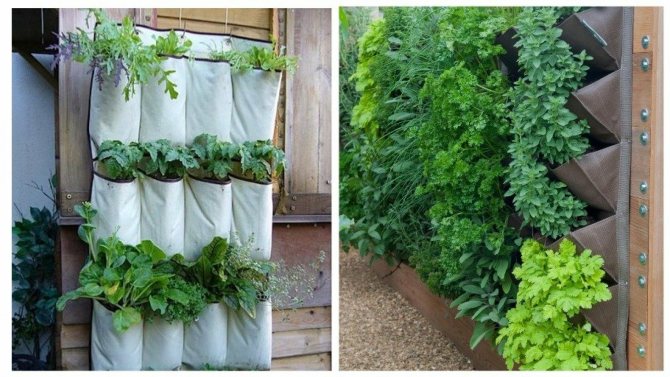

You can search for this option in stores or do it yourself. We need a fabric that can withstand a lot of weight and is breathable (like canvas or tarpaulin) + strong threads. Well, the ability to sew, of course. We place small pots or special plastic bags in the pockets. Attention! Plants can be moved here only after they have taken root in ordinary pots.


